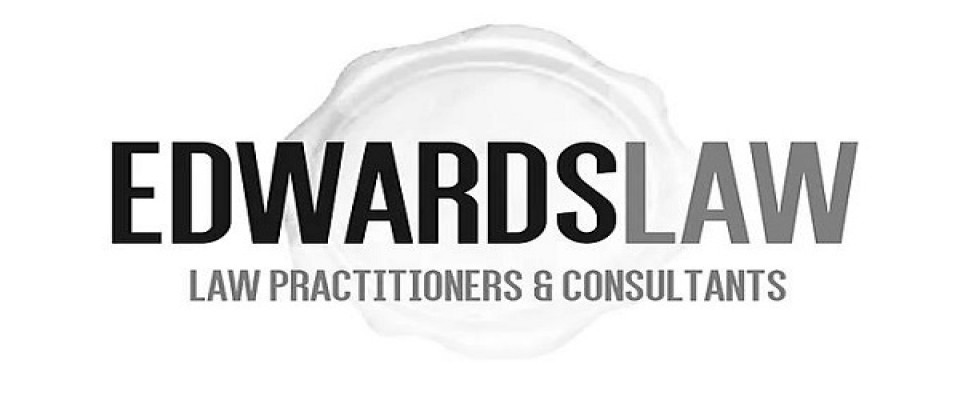When Scientists “Discover” What Indigenous People Have Known For Centuries Featured
 A team of researchers in northern Australia have documented kites and falcons, “firehawks,” intentionally carrying burning sticks to spread fire: It is just one example of western science catching up to Indigenous Traditional Knowledge. (James Padolsey/Unsplash)
A team of researchers in northern Australia have documented kites and falcons, “firehawks,” intentionally carrying burning sticks to spread fire: It is just one example of western science catching up to Indigenous Traditional Knowledge. (James Padolsey/Unsplash)
By George Nicholas
22 March, 2018. Our knowledge of what animals do when humans aren’t around has steadily increased over the last 50 years. For example, we know now that animals use tools in their daily lives. Chimps use twigs to fish for termites; sea otters break open shellfish on rocks they selected; octopi carry coconut shell halves to later use as shelters. But the latest discovery has taken this assessment to new heights—literally.
A team of researchers led by Mark Bonta and Robert Gosford in northern Australia has documented kites and falcons, colloquially termed “firehawks,” intentionally carrying burning sticks to spread fire. While it has long been known that birds will take advantage of natural fires that cause insects, rodents and reptiles to flee and thus increase feeding opportunities, that they would intercede to spread fire to unburned locales is astounding.
It’s thus no surprise that this study has attracted great attention as it adds intentionality and planning to the repertoire of non-human use of tools. Previous accounts of avian use of fire have been dismissed or at least viewed with some skepticism.
But while new to Western science, the behaviors of the nighthawks have long been known to the Alawa, MalakMalak, Jawoyn and other Indigenous peoples of northern Australia whose ancestors occupied their lands for tens of thousands of years. Unlike most scientific studies, Bonta and Gosford’s team foregrounded their research in traditional Indigenous ecological knowledge.
They also note that local awareness of the behavior of the firehawks is ingrained within some of their ceremonial practices, beliefs and creation accounts.
The worldwide attention given to the firehawks article provides an opportunity to explore the double standard that exists concerning the acceptance of Traditional Knowledge by practitioners of Western science.
Traditional Knowledge ranges from medicinal properties of plants and insights into the value of biological diversity to caribou migration patterns and the effects of intentional burning of the landscape to manage particular resources. Today, it’s become a highly valued source of information for archaeologists, ecologists, biologists, ethnobotanists, climatologists and others.
For example, some climatology studies have incorporated Qaujimajatuqangit (Inuit traditional knowledge) to explain changes in sea ice conditions observed over many generations.
Yet despite the wide acknowledgement of their demonstrated value, many scientists continue to have had an uneasy alliance with Traditional Knowledge and Indigenous oral histories.
On the one hand, these types of knowledge are valued when they support or supplements archaeological, or other scientific evidence. But when the situation is reversed—when Traditional Knowledge is seen to challenge scientific “truths —then its utility is questioned or dismissed as myth. Science is promoted as objective, quantifiable, and the foundation for “real” knowledge creation or evaluation while Traditional Knowledge may be seen as anecdotal, imprecise and unfamiliar in form.
Are Indigenous and Western systems of knowledge categorically antithetical? Or do they offer multiple points of entry into knowledge of the world, past and present?
There are many cases where science and history are catching up with what Indigenous peoples have long known.
For instance, in the past two decades, archaeologists and environmental scientists working in coastal British Columbia have come to recognize evidence of mariculture—the intentional management of marine resources—that pre-dates European settlement. Over the course of thousands of years, the ancestors of the Kwakwaka’wakw and other Indigenous groups there created and maintained what have become known as “clam gardens”—rock-walled, terrace-like constructions that provide ideal habit for butter clams and other edible shellfish.
To the Kwakwaka’wakw, these were known as loxiwey, according to Clan Chief Adam Dick (Kwaxsistalla) who has shared this term and his knowledge of the practice with researchers. As marine ecologist Amy Groesbeck and colleagues have demonstrated, these structures increase shellfish productivity and resource security significantly. This resource management strategy reflects a sophisticated body of ecological understanding and practice that predates modern management systems by millennia.
These published research studies now prove that Indigenous communities knew about mariculture for generations—but Western scientists never asked them about it before. Once tangible remains were detected, it was clear mariculture management was in use for thousands of years. There is a move underway by various Indigenous communities in the region to restore and recreate clam gardens and put them back into use.
A second example demonstrates how Indigenous oral histories correct inaccurate or incomplete historical accounts. There are significant differences between Lakota and Cheyenne accounts of what transpired at the Battle of Greasy Grass (Little Big Horn) in 1876, and the historical accounts that appeared soon after the battle by white commentators.
The Lakota and Cheyenne can be considered more objective than white accounts of the battle that are tainted by Eurocentric bias. The ledger drawings of Red Horse, a Minneconjou Sioux participant in the battle, record precise details such as trooper’s uniforms, the location of wounds on horses, and the distribution of Indian and white casualties.
In 1984, a fire at the battleground revealed military artifacts and human remains that prompted archaeological excavations. What this work revealed was a new, more accurate history of the battle that validated many elements of the Native American oral histories and accompanying pictographs and drawings of the events. However, without the archaeological evidence, many historians gave limited credence to the accounts obtained from the participating Native American warriors.
Hypotheses incorporating traditional knowledge-based information can lead the way toward unanticipated insights. The travels of Glooscap, a major figure in Abenaki oral history and worldview, are found throughout the Mi’kmaw homeland of the Maritime provinces of eastern Canada. As a Transformer, Glooscap created many landscape features.
Anthropologist Trudy Sable (Saint Mary’s University) has noted a significant degree of correlation between places named in Mi’kmaw legends and oral histories and recorded archaeological sites.
Opportunities at the Intersection
As ways of knowing, Western and Indigenous Knowledge share several important and fundamental attributes. Both are constantly verified through repetition and verification, inference and prediction, empirical observations and recognition of pattern events.
While some actions leave no physical evidence (e.g. clam cultivation), and some experiments can’t be replicated (e.g. cold fusion), in the case of Indigenous knowledge, the absence of “empirical evidence” can be damning in terms of wider acceptance.
Some types of Indigenous knowledge, however, simply fall outside the realm of prior Western understanding. In contrast to Western knowledge, which tends to be text-based, reductionist, hierarchical and dependent on categorization (putting things into categories), Indigenous science does not strive for a universal set of explanations but is particularistic in orientation and often contextual.
This can be a boon to Western science: hypotheses incorporating traditional knowledge-based information can lead the way toward unanticipated insights.
There are partnerships developing worldwide with Indigenous knowledge holders and Western scientists working together. This includes Traditional Ecological Knowledge informing government policies on resource management in some instances. But it is nonetheless problematic when their knowledge, which has been dismissed for so long by so many, becomes a valuable data set or used selectively by academics and others.
To return to the firehawks example, one way to look at this is that the scientists confirmed what the Indigenous peoples have long known about the birds’ use of fire. Or we can say that the Western scientists finally caught up with Traditional Knowledge after several thousand years.
- Smithsonian Magazine
1 comment
-

What is new then? And, as often uttered, who says that the ancients were old-fashioned? Quite simply, there are different (or a plurality) of ways of knowing one-and-the-same single level of reality. (i.e., ways of being). That is why the epistemological questions (e.g., Indigenous, non-Western and Western ways of knowing) are secondary to the ontological questions (i.e., the way of reality).
I now quote a befittingly relevant passage from the text of the interesting article above, "As ways of knowing, Western and Indigenous Knowledge share several important and fundamental attributes. Both are constantly verified through repetition and verification, inference and prediction, empirical observations and recognition of pattern events."
In the case of Tonga, where both the quality and beauty and utility and functionality of things are merged in the creative process, as in the event of science as a special way of "knowing" the world, knowledge is theoretically critically but practically functionally gained in education as a psychological process by way of trial-and-error through experimentation, verification, observation and prediction.
By the way, the indigenous Tongan philosophy or theory of education parallels education in a scientific sense, when it involved a temporal-substantial, formal-substantial (and practical-functional) transformation of the human mind (and thinking), in dialectical ways, from vale, ignorance, to 'ilo, knowledge, to poto, skill, in that logical order of precedence.
From the newly-emerged indigenous Tongan ta-va philosophy / theory of reality, based on the affinity or proximity with Western concepts and practices "time" and "space," the fundamental dispute between ontology and epistemology is one between reality as "it is" and reality as we "know it."
The fundamental dispute is therefore not how we know what we know, nor where we know what we know, nor when we know what we know, nor why we know what we know; but rather what we really know (which is, in this case, reality)..
There is, it must be pointed out, no knowledge of and in itself; but rather it is always knowledge of reality. By the same token, knowledge is knowledge of ta and va, time and space, on the one hand, and of fuo and uho, form and content, on the other.
Knowledge outside of ta and va, time and space, on the one hand, and fuo and uho, form and content, on the other, belongs in the worlds of mythology and of fantasy, where there are merely no causes and effects or logical consequences.
However, I find the assertion in the text of the article above that "Indigenous science does not strive for a universal set of explanations but is particularistic in orientation and often contextual" highly problematic.
Given that the universal and the particular, as well as the whole and the parts, are inseparably two sides of the same thing, process or state of affairs, in nature, mind and society, both do apply as much to Indigenous science (and Tongan knowledge) as they do to Western science (and Western knowledge).
This is most evident in the tavaist proposition that, in general, everywhere in reality, tempospatiality or four-sided-dimensionality is fakafelavai or intersection, that is, fepaki or conflict, and there is nothing above fakahoko or intersection and fakamavahe or separation.
This is, in particular, manifested in terms of mata (eye) and, its mirror image, ava (hole), where ivi (energy) is organised into kula (red) and 'uli (black), as in mata kula (red eyes) and ava kula (black eyes) and mata 'uli (black eyes) and ava 'uli (black holes) and so on and so froth.



